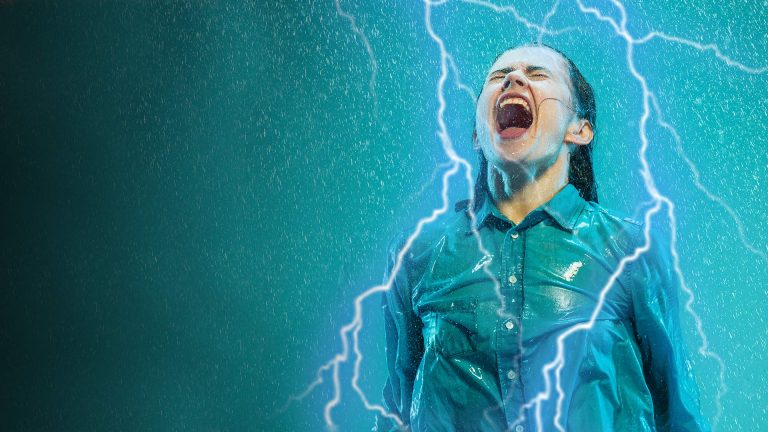It’s a warm summer evening and you’re enjoying a barbeque with your family and friends. The sunny skies suddenly turn dark as a storm blows in. You hear thunder and know the lightning is on its way.
There are five different ways you can get hit by lightning. A direct strike is what people usually think of first. It’s definitely the most dramatic and deadliest of strikes since it can travel through your nervous and cardiovascular system. But it’s far from the most common.
The most common strikes are ground currents. These ripple through larger areas and are the leading cause of lightning related injury and death.
Anything metal, like plumbing or faucets, are highways for lightning. Conduction happens when you’re in contact with any of these easy access points. And then there are side flashes. This happens when lightning bounces off something like a tree or telephone pole. That flash of current will hit anyone near these tall objects.
The final way to get hit by lightning is through streamers. These energy bursts happen when the atmosphere becomes charged with electricity. Streamers move upwards from objects, and people, close to the ground.
You have a 90% of survival if you are hit by lightning. But you’ll still face painful injuries. Deafness, burns, brain injuries, memory loss, nerve damage, and seizures are just a few of the lasting issues that could plague you.
Where is the safest place to shelter? What areas should you avoid? What is the best position to survive?
Step 1: Know When Lightning Is Coming
Lightning doesn’t just strike when a thunderstorm is above your head. It may still be a clear day. Lighting can happen as far as 16 kilometers (10 miles) away from a thunderstorm.
So pay attention to signs that lightning is in the air. If your skin starts to tingle or if the hair on your arms start to rise, that’s a sure sign of electricity. And if you hear thunder or a clicking noise, that’s another sign to get somewhere safe.
Step 2: Hop Into a Car
Seeing as most people don’t carry around a suit of armor or a Faraday suit, a car is your best bet. Make sure the windows are closed and don’t touch anything metal.
Lightning will travel through the metal of the car and into the ground, passing by you harmlessly.
Step 3: Avoid Water, Open Areas, and Caves
If you can’t shelter in a car, then it’s good to know what to avoid. Do not shelter under anything that is not enclosed, like a golf cart or gazebo. Avoid open areas, especially hills.
Stay away from any body of water. Pools, rivers, lakes, get away from them all. If you’re on a boat, well, I’m sorry. Hiding under a cave entrance or other overhang seems smart. But in reality, you will be acting as a conductor and lighting will seek you out.
Step 4: Make Yourself Small
Shrink your physical footprint as small as possible by crouching down and placing your head between your knees, similar to a tight ball. Cover your ears with your hands to prevent any hearing loss.
Your head acts as the entry point for lighting, which travels through you and out your feel. The smaller you make that distance, the better your chance at surviving with minimal injuries.
If you have a backpack or a foam mat, hop on that. According to National Oceanic and Atmospheric Administration, you have a 1 in 3,000 chance of being hit by lighting in your lifetime. So remember the helpful motto, “When Thunder Roars, Go Indoors.”
That way you can safely watch the beautiful lighting storm on your couch, just don’t touch the windows.
Sources
- “Lightning Strike Survivor Stories”. 2020. weather.gov.
- “Lightning Strike” 2020. weather.gov.
- “Lightning Science: Five Ways Lightning Strikes People”. 2020. weather.gov.
- “Frequently Asked Questions| Lightning | CDC”. 2020. cdc.gov.
- “National Weather Service Lightning Fatalities In 2020: 8”. 2020. weather.gov.
- “Being Struck By Lightning Changed This Man’s Life Forever | The Weather Channel”. 2020. The Weather Channel.


















